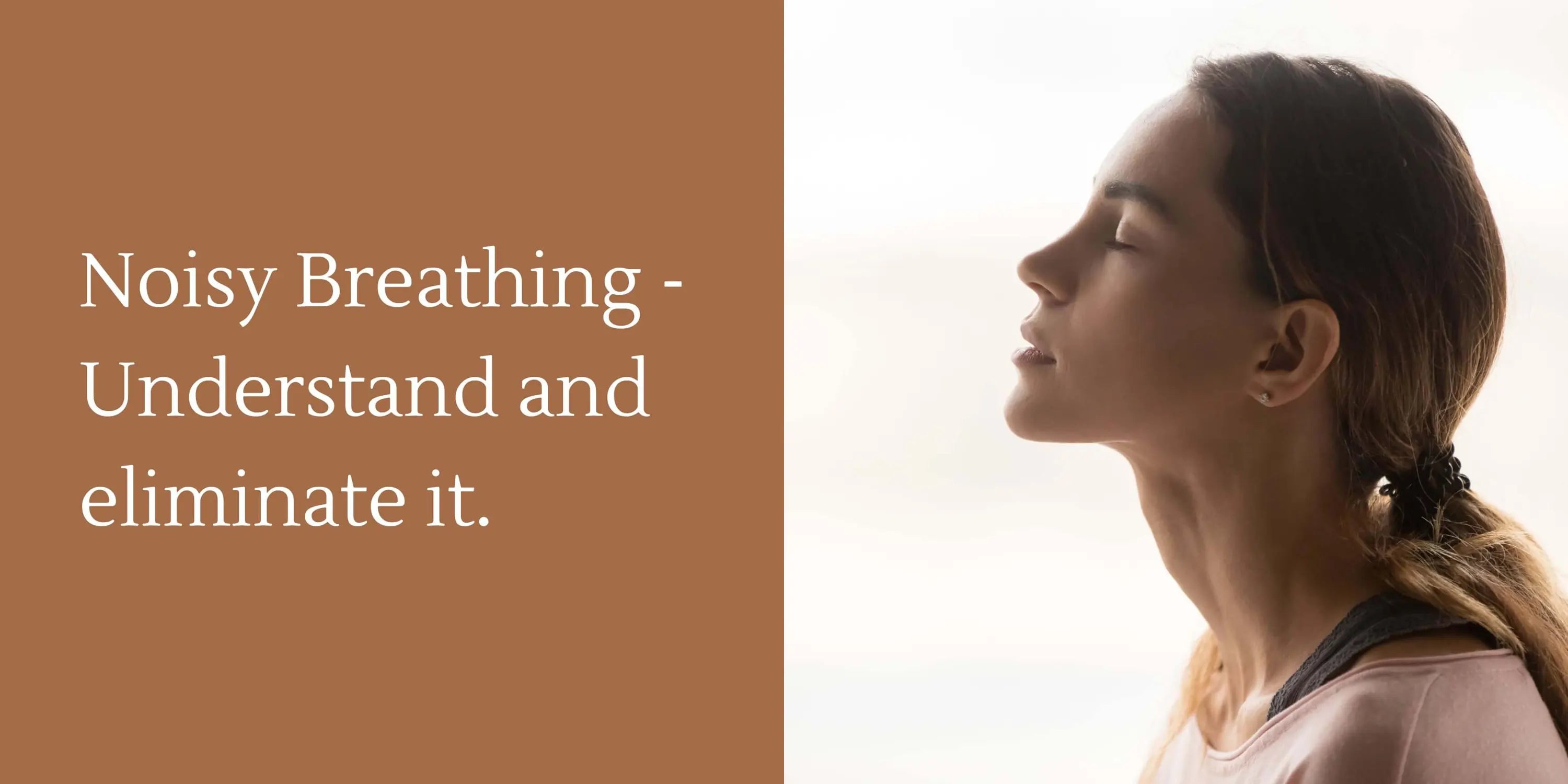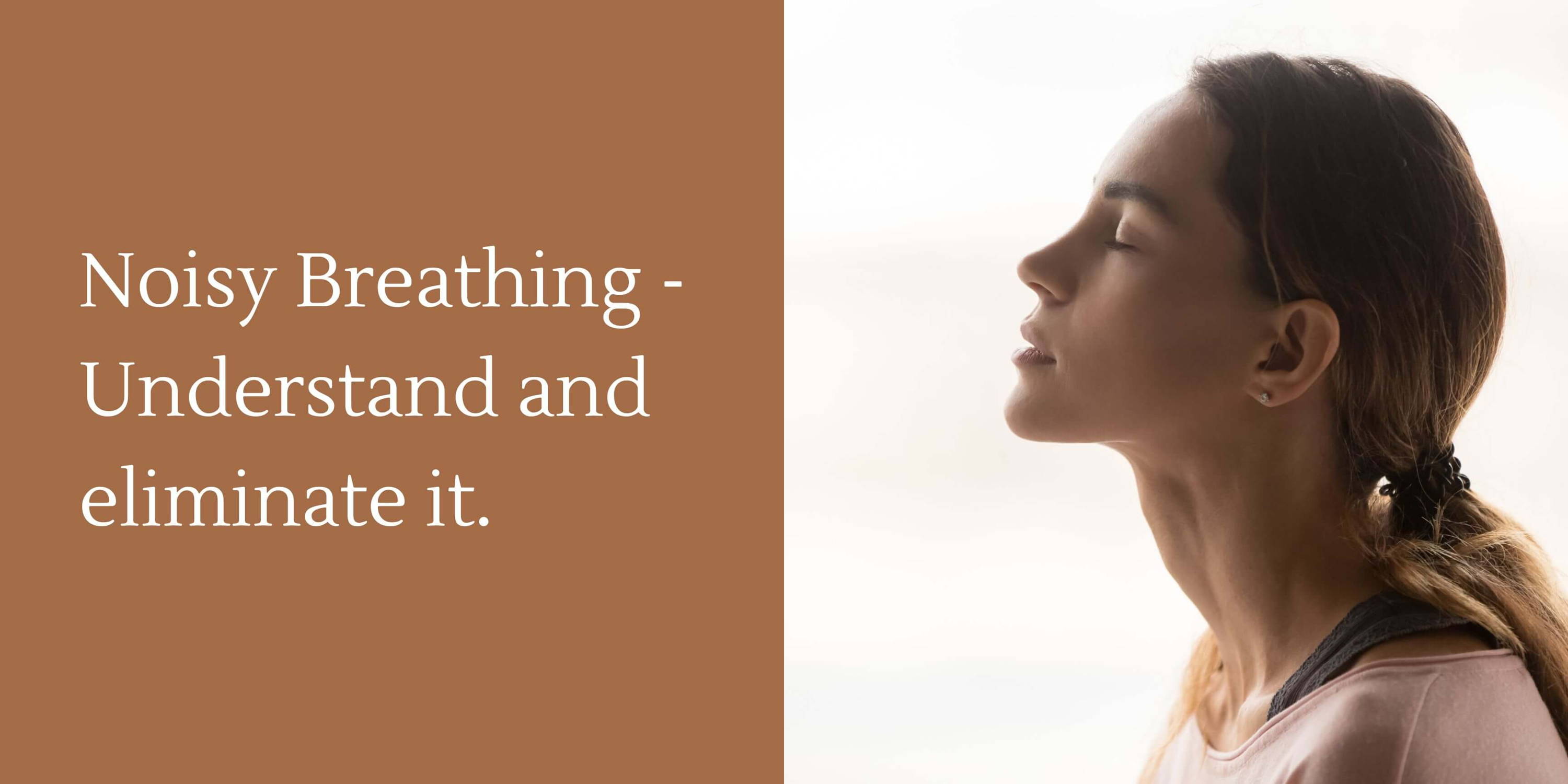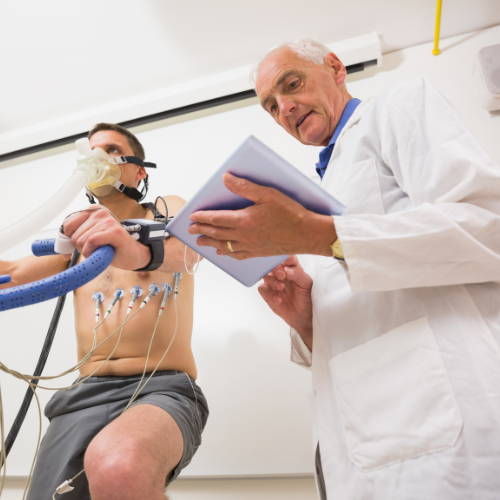
Is Noisy Breathing an Indicator that Something is Wrong with One's Breathing?
0 Comments
Is Noisy Breathing an Indicator that Something is Wrong with One's Breathing?
Know everything about noisy breathing - its causes, how to eliminate noisy breathing and much more.

Table of Contents
Noisy breathing will distract your mind as long as it lasts
Not to be confused with lung sounds.
From casual awareness of people's breathing from day to day, one can notice that a person's breathing quirks are often associated with noise. In general, noise is considered to be an indicator that something is wrong.
So it is with breathing.
Noise can be attributed to negative aspects of breathing such as snoring, gasping, heaving, and sniffling during a flu or cold. This article will address aspects and causes of noisy breathing in adults and will point out why it is important that breathing is most often as quiet as possible.
What is Noisy Breathing?
Noisy breathing can be explained using principles of basic mechanics. An analogy that one can use to relate to noisy breathing is the efficiency and smoothness of a machine. A person who hears a machine make a grinding noise or rattle when it runs will most likely think that the machine does not run very well and that it has a problem.
A part may be loose, a screw may need to be tightened, the machine might need lubrication, or it might even be ready to fall apart. A new car or appliance that runs smoothly and quietly likely also runs more efficiently. Noise can be thought of as a form of friction. Friction prevents machines from running smoothly and efficiently, and is responsible for their wear and tear.
It is like driving a car while applying the brake, or walking while dragging one's feet across the floor. The car or person must work harder to get the same distance in the same amount of time. This increase of exertion is hard on the car and will make it wear out sooner. By decreasing the amount of friction (noise), the workload is taken off the car and it runs much easier.

Mike also uses the idea of friction when describing why wind instruments are round. If they were not, friction would make it impossible to maintain even tonality. Friction also causes heat to be released as a by-product. Instead of being applied to useful work, this energy is stuck or wasted or can wear down or rough up the surface that it passes over.
Understanding Noisy Breathing
Thermodynamics and Breathing
By-products such as heat and noise indicate an increase of entropy in the system, thus rendering the system closer to wearing out. Entropy can be thought of as the tendency towards disorder, or the excessive use of energy. It is desirable to slow the process of entropy as much as possible.
This principle of thermodynamics can also relate to breathing. Putting too much stress on the system makes it work inefficiently and so the breather doesn't get as much oxygen as they could or they use up more than they need to.
Forced Breathing
The noise can be explained by fast or forced breathing or it could also mean that something is blocking the breathing, such as a constricted airway or some sort of foreign particle or irritant. Not all the air can get through, and so breathing is not as easy or efficient as it could be.
Friction Caused by Inefficient Breathing
The friction caused by inefficient breathing could also lead to problems such as vocal tract swelling and snoring. Noisy breathing in adults may indicate a sort of “stuck” or “leaky” breathing valve, in which the flow of air is being disrupted. This is similar to a heart murmur, in which a leaky heart valve disrupts proper blood flow.
Breathing that is quiet is also more likely to be smooth, easy, efficient, and balanced, just as the case with machines. Noise produced during breathing may be a signal of subtle gasping or breath heaving, thus inefficiency and distortion of the breathing sequencing and mechanics.
Noisy Breathing - An Indicator of UDB?
One example of a noisy breathing issue is an exhale that sounds as if it is rushed and forced. This does not necessarily occur during exertion; it can also occur when the person is at rest (eg. a student during class) or when the person is engaged in a light activity, such as washing dishes or reading the newspaper.
This kind of noisy breathing is severely out of balance and is a likely indicator of UDB. A rushed heavy exhale too often invites a rushed heavy inhale, leading one towards over-breathing and hypocapnia (too little carbon dioxide in the plasma which inhibits proper oxygenation of the red blood cells), which are precursors to a multitude of potential health challenges. Within reason, the slower an exhale is, the more oxygen that can be absorbed and the more efficient the breathing mechanics.
A slow, relaxed exhale will naturally be quiet. Forced exhalations are often preceded by a period of breath-holding that lasts for several seconds. Pausing after an inhale is the reverse of what breathing should be. As Mike maintains, the resting breathing pause should follow an exhale (not an inhale), thus triggering a deeper, easier, unforced inhale to follow.
Noisy, forced, hurried inhales and/or exhales are often an indicator of too much stress, imbalance, or inefficiency of the breathing system. Mike believes this may set up a future tendency towards high blood pressure and stroke.
Breathing During Singing or Speaking
Quiet breathing during speaking or singing is another important issue. It is quite common for people to produce breathing noises while they speak or sing, such as hissing or gasping on the inhale. In the case of singing, the noises are a glaring distraction to the mood and message in the song.
The noise is mainly caused by breathing in or out using too much throat breathing instead of foundational breathing and or swelling of membranes due to allergy or closure due to poor posture. It also stems from a poor Optimal Breathing Window
In the case of speaking, they make it difficult to concentrate on what the person is trying to say, and they degrade the message of the speech. The root of the noise is a poor core level foundation of the breathing plus poor posture ranging from the pelvic floor to the tip of the tongue.
Dentition, an enlarged soft palate, or the tongue too far into the back of the mouth can also create friction and noise. When this happens, not all the air can get easily in or out so the person will have a harder time sustaining an even, resonant speech. The speaker will need to breathe more often, compromising the smoothness and quality of the delivery.
The flow of air should be smooth, deep, effortless, and noiseless, making the person's delivery more effective as well as properly working and exercising his/her breathing.
From an aesthetical point of view, proper breathing is analogous to a diver entering the water with almost no splash or a figure skater gliding gracefully across the ice or an eagle floating upward on a warm current of air.
A person can and should learn to breathe quietly while speaking or singing.
During private sessions and workshops, which often include speaking and singing, Mike often uses quiet breathing as a key factor of breathing improvement.
Eliminating Noisy Breathing
The importance of eliminating noisy breathing in adults cannot be overstated. Noise is a signal that something is wrong. Friction is the main explanation for noise. Friction causes excessive wear and mechanics become unbalanced, overworked, inefficient, or out of sync and harmony.
It is similar to the fact that pain is the body's way of stating that it has a problem. It might be justifiable for breathing to be noisy (such as gasping or breath heaving) during an emergency, but overall, it should be as quiet as reasonably possible, even while breathing deeply.
Noisy breathing is an especially common sign of lung disease. Abnormal sounds range from a high-pitched crowing during inhalation to continuous musical sounds during exhalation (wheezing, which occurs with asthma and some other disorders).
The maxim "all that wheezes is not asthma" underscores the fact that many health conditions, including diseases of the larynx, heart failure, pulmonary embolism, and COPD, can cause wheezing. Repetitive loud snoring during sleep, interrupted by periods of silence in which there's no air flow, is a major sign of sleep apnea.
You can quiet your breathing by developing it properly. To do so, you can join me at an Optimal Breathing Individual or practitioner training. Or begin with our most popular self help program called the Optimal Breathing Kit.

Meet Mike White
Meet Michael Grant White, the Optimal Breathing Coach and get actionable insights on your breathing development, health and longevity

How Good is Your Breathing?
Want to know the future of your health and longevity?
Most Popular Articles

April 12,2021

Feb 10, 2022

Attain satisfactory levels of exercise without aggravating existing heart.
Understand and explore EWOT - Exercise with Oxygen Therapy.
Interviews with Denis
Breathing & Oxygen Articles
- Breathing
- Oxygen
- Mold Could Be in Your Home Right Now. Are You at Risk?
- Beat Work Stress the Right Way
- Bad Breathing Causes Asthma- Here's What to Do!
- Optimal Breathing, Autism & Brain Development
- Why Breathe Better? Bad Breathing Makes You sick or Sicker. Learn To Breathe Better Now
- Cure your Breathing Problems with Breathing Exercises
Meet & Work With Our Practitioners
Get personal help to improve your health
and vitality.
Get expert coaching and guidance from our Optimal Breathing experts.
Whether you are looking to have an Integral Breathwork expert, Voice Coach
or someone who specializes in anxiety or depression, look no further.
Overview of the Turbo Oxygen System
EWOT ON STEROIDS Based On Oxygen Multistep Therapy aka OMT
Accelerating wellness, physical endurance, mental clarity and more. People today are more health conscious than ever. Men and women have always used the gym as a social venue as well as a fitness venue, but many of these people that used to belong to gyms now find it easier and more convenient and lately even gas saving to work out at home with store bought equipment.
You know the feeling when you actually wake up early to workout?





